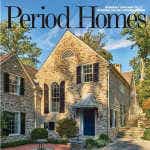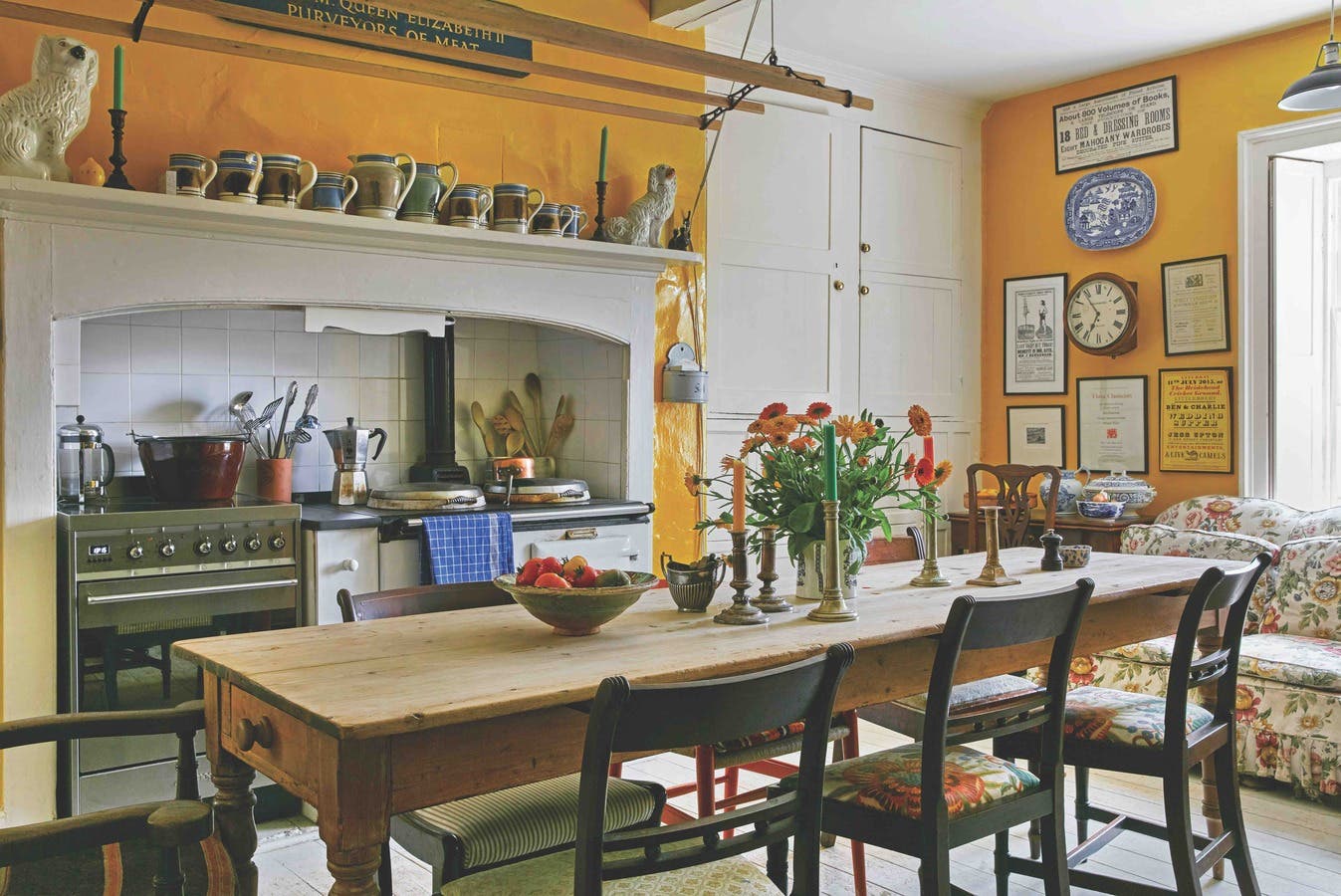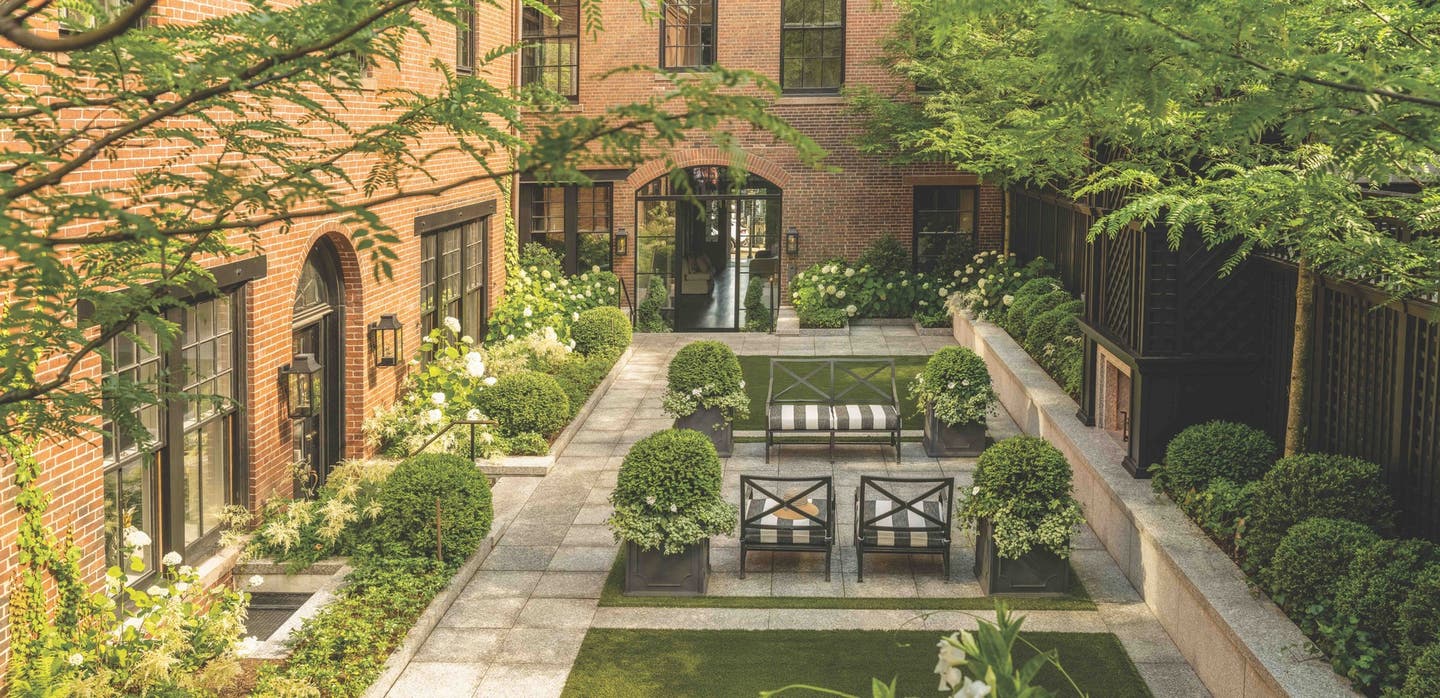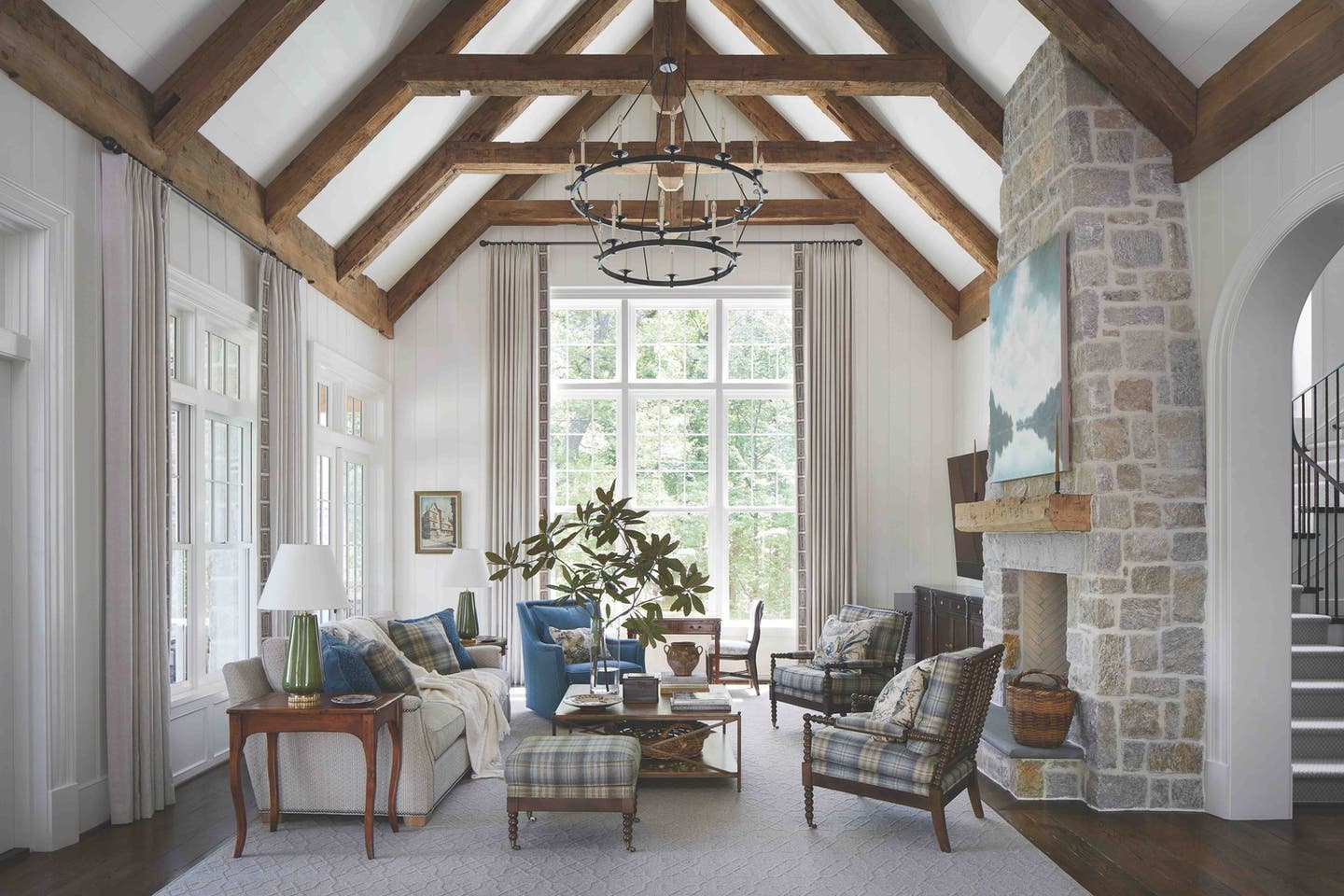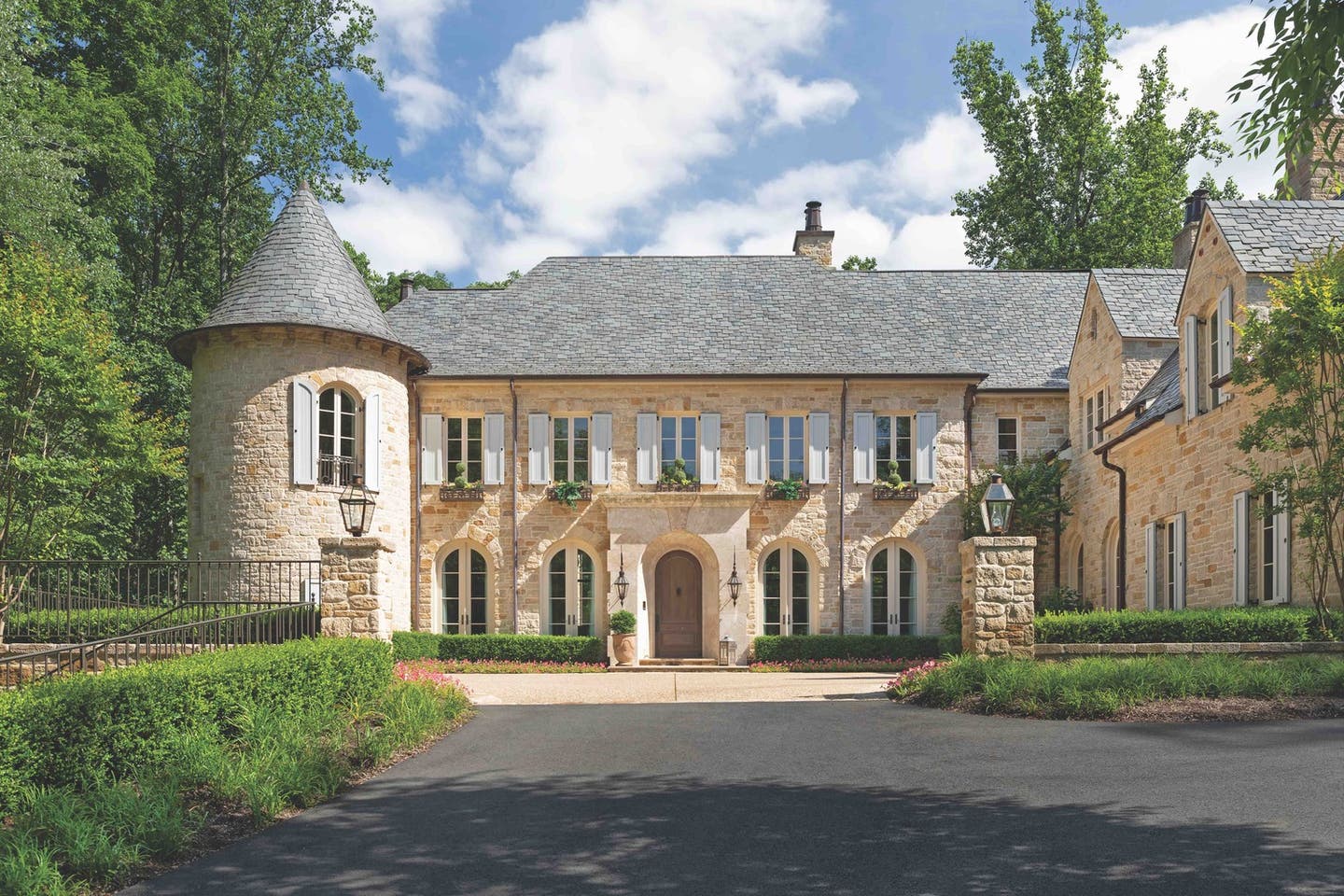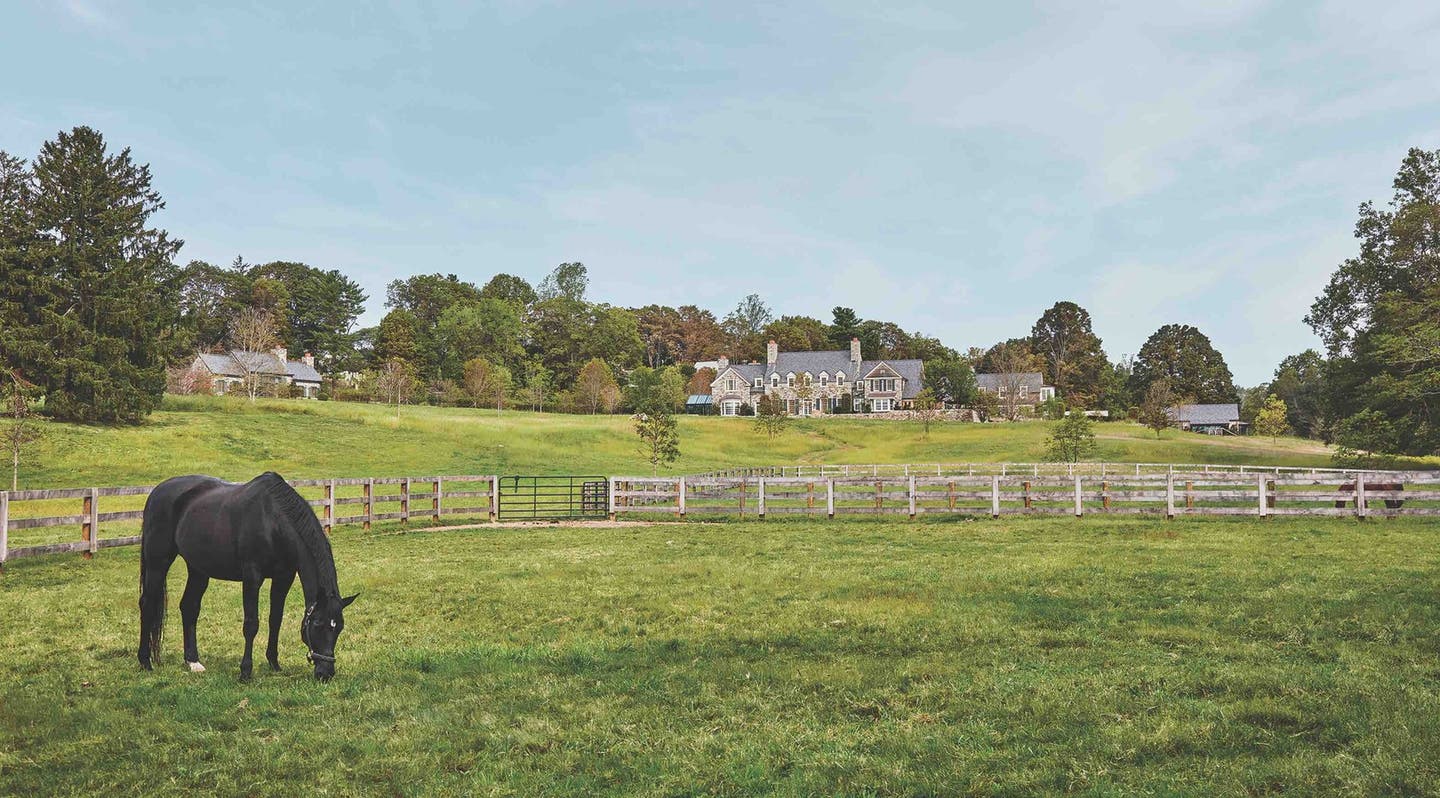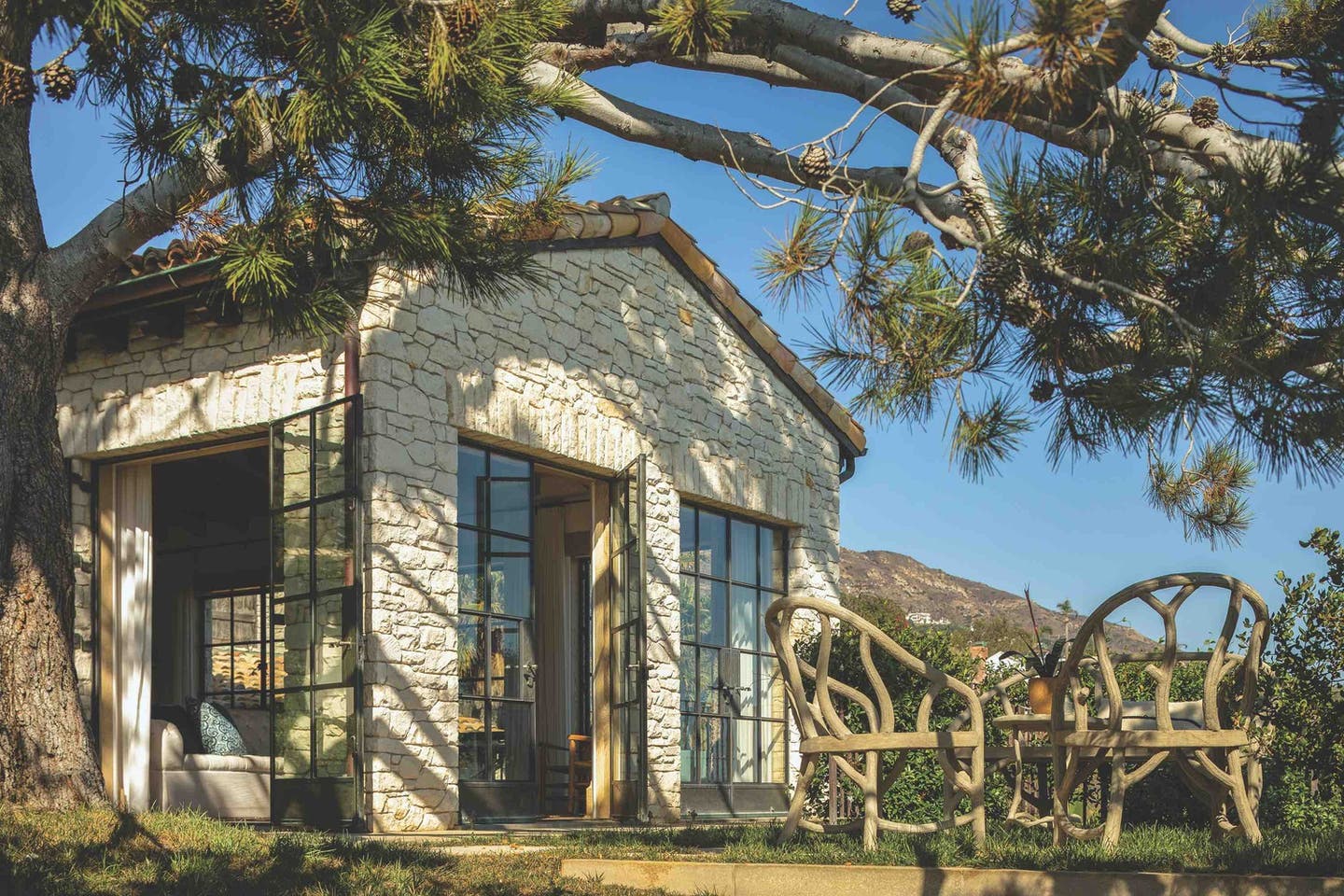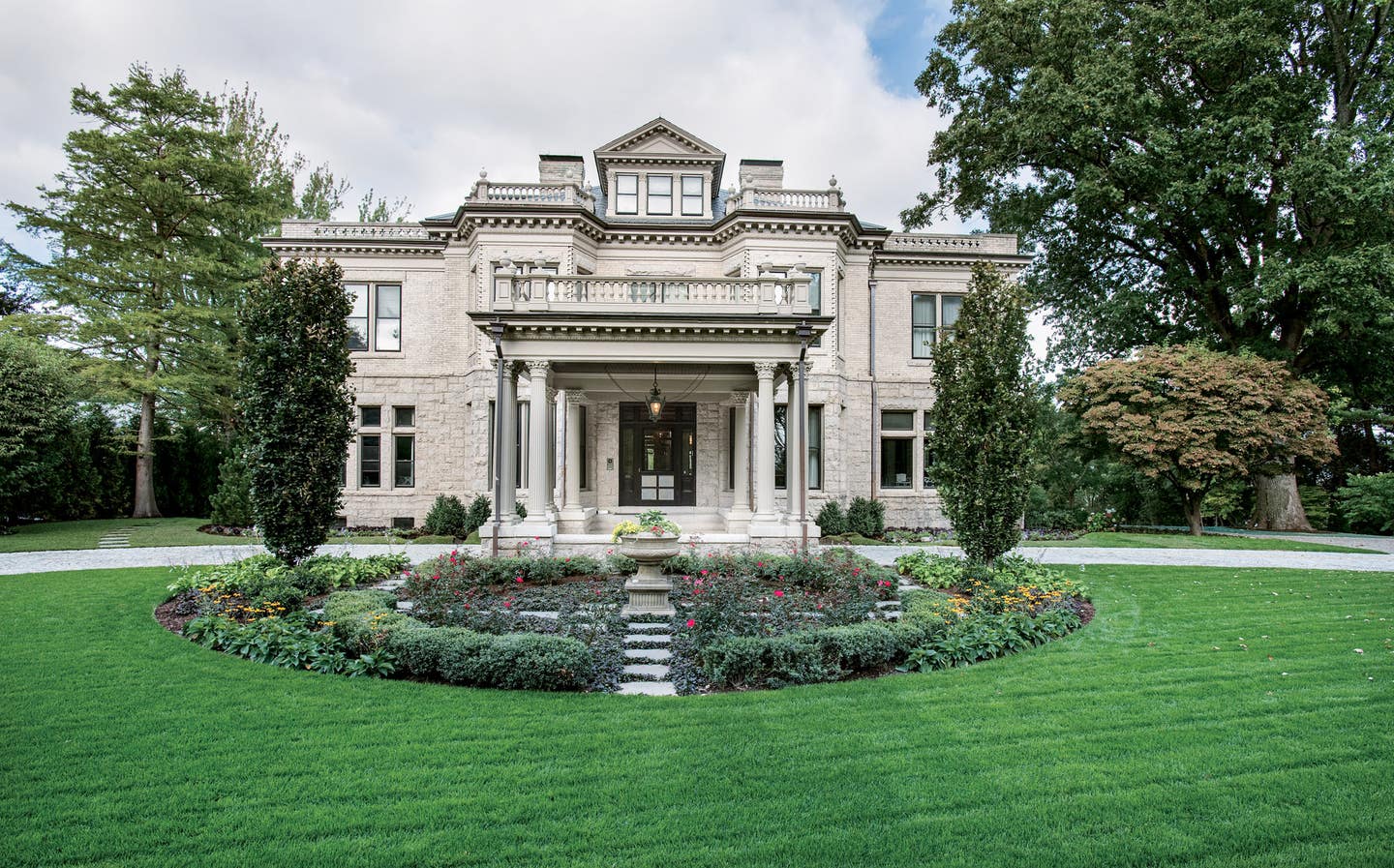
Restoration & Renovation
Slocum Hall Design Group Restores Riley Mansion
Project: Riley Mansion
Architect: Slocum Hall Design Group
Architecture wise, the Riley Mansion in Newton, Massachusetts, just outside Boston proper, has a storied past. Perched on Mount Ida, the town’s highest point, it was built in 1876 as a one-and-a-half-story Queen Anne. When Boston textile titan Charles Riley purchased the estate at the tail end of the 19th century, he decided to turn it into a stately Gilded Age “summer cottage” like those dotting the coast of Newport, Rhode Island, where his wife grew up.
Transforming the Queen Anne into a Newport grand dame required a transition from Victorian to Neoclassical Revival in presentation, including removal of two spires. The Rileys added on another story and a half, attached a wing on either side, and also pushed out the back, doubling the original footprint of 5,000 square feet. This two-year metamorphosis finished in 1898. Mabel Louise, the couple’s only daughter, lived in the family home her entire life. It was then purchased at auction and avidly preserved by a second family for another two decades.
In 2013, the Riley Mansion was transferred into the care of its third and current owners, a family of six who had outgrown their 1918 Tudor Revival home less than a mile away. David Boronkay, principal at Slocum Hall Design Group, an architecture and interior design firm based in Watertown, Massachusetts, had masterminded the Tudor’s restoration and expansion. He sent his clients the real estate listing for the Newton gem, knowing its rich character would resonate.
“We’ve always loved older homes,” explains the wife. “David joined us for the initial showing and, as we toured, we discussed how the house could be updated while maintaining its history. We fell in love with the original details immediately.” Boronkay adds of the initial impression: “It was like a time capsule: the previous owners were meticulous in its maintenance. Our goal was to keep the formal spaces feeling very accurate to 1896 but to make the house function well for a modern family.”
“Of primary importance was preserving the formal first-floor spaces: the foyer, drawing room, parlor, dining room, and library,” continues Boronkay. Since the Neoclassical moldings and flourishes were in good shape, the contractor, The Remodeling Company, made repairs as needed while updating the wiring and surgically installing a new HVAC system. The husband-and-wife team of Elaine Grant and Matthew Larkin, principals of Grant Larkin, worked with the owners to choose historically appropriate furnishings and paint colors throughout.
TLC measures included screen sanding and staining the original oak floors and under-mounting radiant heat from the basement, which was mostly dirt at the project’s start. Intricate dual-fuel light fixtures, including the parlor’s twin crystal chandeliers, were removed, rewired, UL listed, and reinstalled. In the entry hall, the African mahogany millwork was refinished; the Venetian plaster walls painted a creamy white with honey gloss; and the frieze, previously green and gold, shifted to the same cream tone and a more muted platinum gold leaf.
Decorative glass—evocative of Aestheticism—is a fixture throughout the formal interiors. Tiffany-style stained glass acts as high-art transoms and inset panels of etched glass grace pocket doors prefacing the parlor and drawing room. “These doors were worked on significantly,” says Boronkay. “We had to install steel beams in the floor above to correct sag and keep them functional.” A distinctly Craftsman nod, Grueby Faience fireplace tiles in the parlor were shifted to the oak-lined library. A surround of more formal onyx replaced them.
In the back of the house, formality makes way for modernity, but Boronkay continued his period-appropriate approach. He borrowed space from a walk-in pantry to create a spacious new family-friendly kitchen. The owners wanted it light and bright, opting for Shaker-style cabinets in white lacquer and Italian marble (“It’s like a reverse Carrara, grey with white veining,” he notes) for the island top and backsplash. A new copper hip-roof skylight lets in additional daylight.
“While out to dinner in New York City, the owners sent me a picture of ceiling tiles,” recalls Boronkay. “I said they’re Victorian in feel and something we could absolutely do. The restaurant version was a dull copper, but we chose polished zinc to help reflect light.” An arch in the cabinetry references the arched window beyond, capturing instead of blocking the garden views.
Continuing the owners’ desire for light-filled informality in the back of the house, Boronkay transformed a previously enclosed porch into a window-lined breakfast room. To connect it with the kitchen, the builder forged an opening by cutting through a foot of solid granite. Nestled into the porch’s rounded end, a custom dining table with integrated lazy Susan seats up to 14.
The owners gained additional square footage via the finished basement, where a laundry room, theater, gym, hair salon, and steam room are all new amenities. “We enclosed an outdoor stairwell off the kitchen—the original access to the stable from the servants’ quarters—and turned the space below into a family room for the kids and a secondary caterer’s kitchen for entertaining,” says Boronkay.
Adding on a three-bay carriage house (the original was sold in a previous subdivision) left Boronkay with the problem of sourcing granite, specifically Milford pink granite. “I luckily found a source at ABX, Boston’s architectural expo; we bought everything he had,” he recalls. The exterior was matched using heavily rusticated cuts of stone for the veneer and castings of the main home’s balusters. Cabinets preserved from the butler’s pantry lend period detail in the guest quarters above the garage.
On the second and third floors, Boronkay reutilized existing spaces to achieve more contemporary layouts. The home’s original master suite at the front of the house consisted of his-and-her bedrooms connected by a set of double doors. He recaptured this space for two en suite children’s bedrooms, and also grouped smaller rooms on the third floor to create two additional children’s bedroom suites and a joint hangout space.
One of the owners’ favorite spots is their own master suite oasis. “It was originally several rooms,” explains the wife. “When we first toured the house with David, he saw the opportunity to convert the former sleeping porch into a stunning master bath, which provides views of downtown Boston with two exposures. The adjoining dressing room was created from two adjacent rooms and has a sitting area and wet bar.”
Even with all its grandeur, the mansion is still a place where the family feels at home. “We feel like we’ve made it a place where our kids can lounge on the furniture and host friends. There are plenty of cozy spots to curl up and read, yet sufficient space to entertain on a grand scale,” describes the wife.
The original Queen Anne blueprints hang on the mansion’s walls, and the Riley renovation’s plans grace Boronkay’s office. The parties’ mutual respect for the past is palpable. “We are only the third owners in 125 years,” points out the wife. “We feel a tremendous sense of responsibility to respect our home’s history and carry on its legacy.”
Key Suppliers
Architecture + Interior Design Slocum Hall Design Group, Watertown, MA
Interior Design, Furnishings + Color Palette Grant Larkin, Richmond, MA
Construction The Remodeling Company, Beverly, MA
Custom Cabinets & Architectural Millwork Kenyon Woodworking, Jamaica Plain, MA
Landscape Architect Past Designs, Kennebunk, ME
Landscape & Stone Contractor Leone Company, Newton, MA
Masonry Murray Masonry & More Corp., Peabody, MA
Decorative Painting Christopher Audley – Painting By Design, Concord, MA

